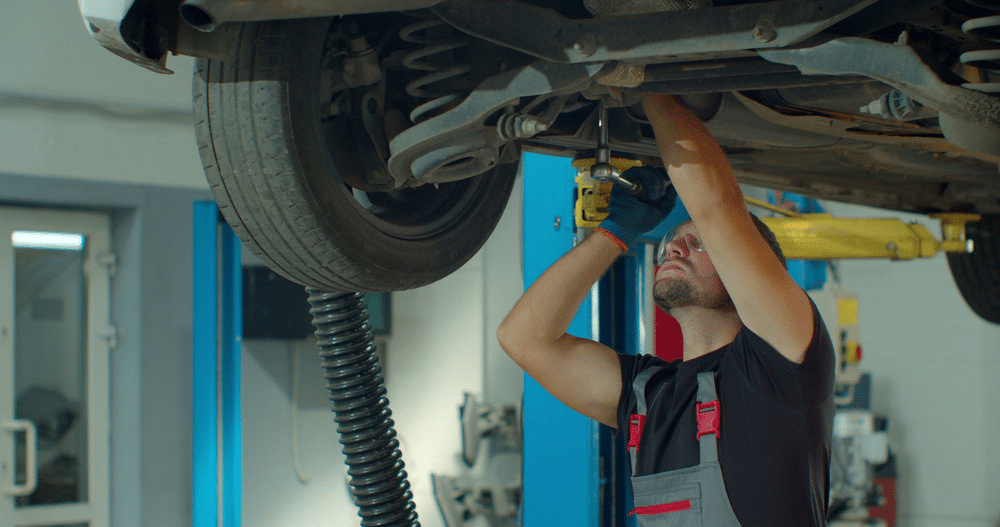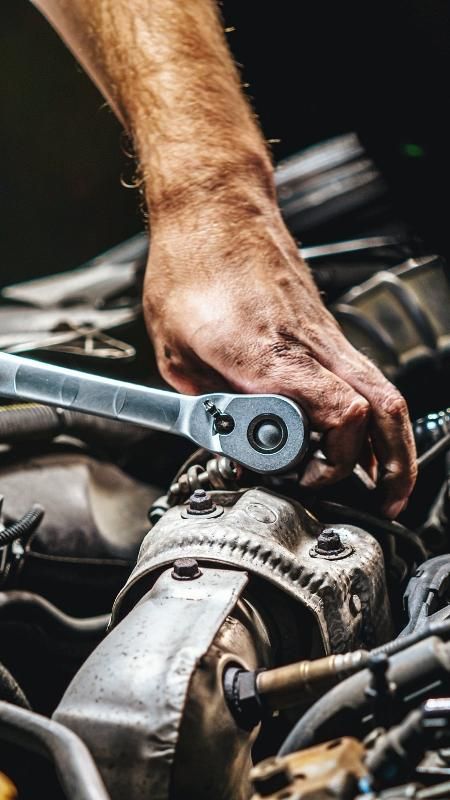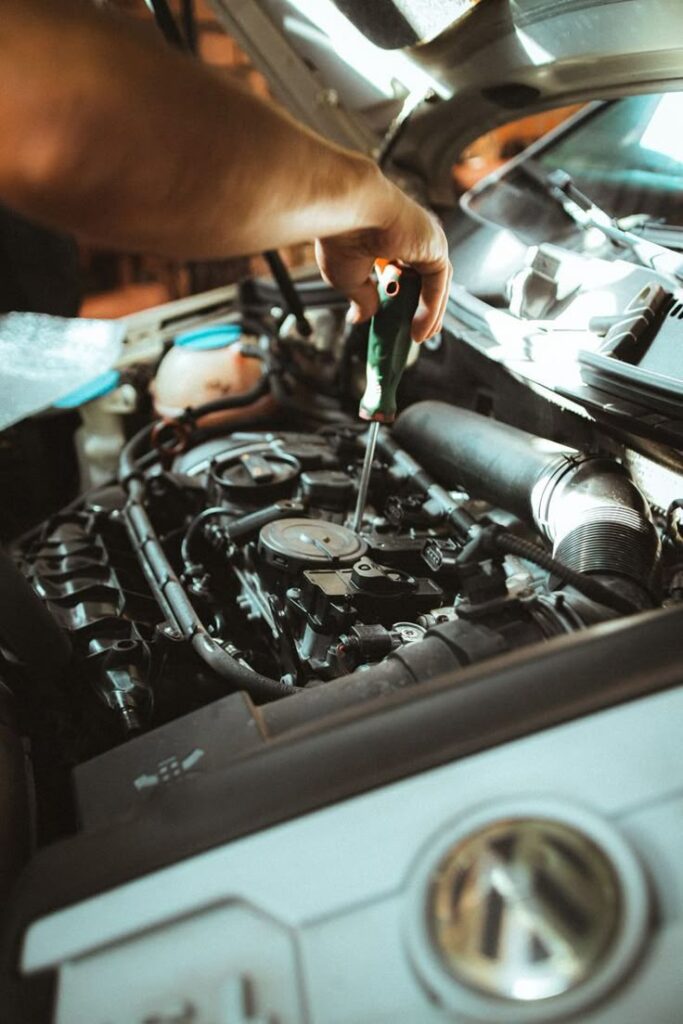
Highlights:
- Always diagnose the root cause—don’t replace parts based on guesswork.
- Use the right tools and OEM-quality parts for reliability and safety.
- Follow torque specs and repair procedures to avoid long-term damage.
- Prioritize safety: use jack stands, wear protection, and disconnect power when needed.
- Never mix or substitute fluids without verifying manufacturer compatibility.
- Electrical work requires proper techniques—avoid shortcuts that risk fire or failure.
- Know your limits—complex or safety-critical repairs should be handled by a licensed and certified auto mechanic.

With the rise of YouTube tutorials and online forums, do-it-yourself car repairs have become more popular than ever. Many vehicle owners are choosing to tackle repairs on their own to cut costs or gain hands-on experience. While some maintenance tasks—like replacing wiper blades or checking tire pressure—are manageable for beginners, more complex jobs often go wrong due to lack of experience, proper tools, or technical knowledge.
These mistakes can lead to expensive damage, unsafe driving conditions, or long-term mechanical issues. This article breaks down the most common errors made by DIYers and explains how a licensed and certified auto mechanic would approach each situation properly, using industry-standard methods and professional insight.
1. Misdiagnosing the Problem
What DIYers Often Do:
- Assume the issue based on symptoms alone, such as replacing a starter when the real problem is a dead battery or faulty ground connection.
- Use online forums or general advice without proper testing.
Why It’s a Problem:
- Replacing parts unnecessarily is costly.
- Misdiagnosis can delay the correct fix and introduce new issues.
How a Licensed and Certified Auto Mechanic Would Handle It:
- Proper Diagnostics: Certified professionals use scan tools to retrieve diagnostic trouble codes (DTCs) and follow manufacturer flowcharts for guided diagnostics.
- Testing Over Guessing: Voltage drop testing, continuity checks, and signal tracing help pinpoint the exact failure.
- Identifying the Root Cause: Certified technicians trace the problem to its source, whether it’s electrical, mechanical, or software-related.
Tip for DIYers: Use a reliable OBD-II scanner and understand that codes indicate systems, not specific failed parts. Always test before replacing components.
2. Using the Wrong Tools or Cheap Parts
What DIYers Often Do:
- Choose universal or budget-brand parts.
- Use makeshift tools instead of vehicle-specific equipment.
Why It’s a Problem:
- Improper tools can damage bolts, fittings, or sensitive components.
- Low-quality parts may not fit correctly or fail early.
How a Certified Auto Technician Approaches It:
- Vehicle-Specific Tools: Tools such as ball joint presses or camshaft alignment tools ensure precision and prevent damage.
- OEM or High-Quality Aftermarket Parts: Professional auto mechanics rely on brands that meet or exceed original specifications.
- Tool Calibration and Maintenance: Torque wrenches and diagnostic equipment are regularly tested for accuracy.
Tip for DIYers: Rent specialty tools from auto parts stores and always verify part compatibility with the vehicle’s VIN.


3. Skipping Torque Specs and Repair Procedures
What DIYers Often Do:
- Tighten bolts “by feel.”
- Ignore sequence-based procedures or skip final steps like brake bleeding.
Why It’s a Problem:
- Over-tightening can strip threads or damage gaskets.
- Improper torque or skipped steps may lead to fluid leaks, warping, or component failure.
How a Licensed Auto Mechanic Would Fix It:
- Adheres to OEM Specifications: Technicians use manufacturer torque charts and follow procedural guidelines precisely.
- Uses Proper Tools: A torque wrench is used for all critical fasteners to ensure proper clamping force.
- Completes Calibration Steps: Systems like ABS, throttle bodies, or transmissions often require post-repair relearns or resets.
Tip for DIYers: Use online repair databases or manuals that offer torque specs and procedure sequences. Accuracy is essential for reliability and safety.
4. Ignoring Safety Measures
What DIYers Often Do:
- Work under a vehicle with only a floor jack.
- Handle battery or fuel components without protective gear.
Why It’s a Problem:
- A car falling off a jack can cause fatal injuries.
- Chemical exposure or electrical shock is a serious risk during many repairs.
How a Certified and Licensed Auto Mechanic Stays Safe:
- Uses Jack Stands and Wheel Chocks: Redundant safety measures are standard practice.
- Wears Protective Gear: Gloves, goggles, and proper footwear protect against burns, cuts, and crush injuries.
- Follows Lockout Protocols: Power is safely disconnected, and systems are depressurized before service.
Tip for DIYers: Always prioritize safety. Use proper supports, keep your work area clean, and wear the right gear.
5. Using the Wrong Fluids or Mixing Incompatible Ones
What DIYers Often Do:
- Assume that all engine oils, coolants, or transmission fluids are interchangeable.
- Mix different fluid types when topping off reservoirs.
Why It’s a Problem:
- Using the wrong ATF can lead to transmission failure.
- Mixing coolants may cause corrosion, gelling, or overheating.
- Contaminated brake fluid can degrade seals and lines.
What a Licensed Auto Mechanic Does Differently:
- Follows Manufacturer Guidelines: Only fluids that meet OEM specifications are used.
- Uses Test Equipment: Tools like coolant testers or brake fluid moisture meters verify fluid condition.
- Performs Proper Flushes: Systems are flushed using equipment that prevents cross-contamination.
Tip for DIYers: Always check the owner’s manual or consult fluid charts. Use clean funnels and containers to prevent contamination.
6. Performing Poor Electrical Work
What DIYers Often Do:
- Twist wires together and use electrical tape as a fix.
- Bypass fuses or connect accessories without proper circuits.
Why It’s a Problem:
- Loose or corroded connections can cause shorts and intermittent failures.
- Unfused circuits can lead to electrical fires or control module damage.
How a Certified Auto Mechanic Handles Wiring:
- Uses Soldering and Heat Shrink Tubing: Ensures secure, durable electrical joints.
- Follows OEM Wiring Diagrams: Every circuit is traced and verified before repairs are made.
- Performs Voltage Drop Testing: Measures circuit performance under load to identify hidden issues.
Tip for DIYers: Avoid shortcuts with electrical work. Learn how to read wiring diagrams and invest in a quality multimeter.
7. Forgetting to Recheck Work Before Driving
What DIYers Often Do:
- Finish a repair and immediately test drive without inspection.
- Forget tools in the engine bay or leave components loose.
Why It’s a Problem:
- Loose components can damage the vehicle or lead to roadside breakdowns.
- A missed step may compromise performance or safety.
How a Licensed and Certified Mechanic Wraps Up:
- Performs a Complete Review: Checks fasteners, fluid levels, and system integrity.
- Conducts a Road Test: Observes performance, listens for noise, and checks warning lights.
- Follows Final Checklists: Ensures no step is overlooked before the vehicle is returned to the road.
Tip for DIYers: Build the habit of rechecking your work. A 10-minute inspection can prevent major problems.
8. Attempting Advanced Repairs Without Experience
What DIYers Often Do:
- Attempt timing belt replacements or transmission repairs based on online guides.
- Start suspension or engine work without understanding alignment or torque requirements.
Why It’s a Problem:
- Mistakes in timing or geometry can ruin an engine or compromise handling.
- Incorrect reassembly often leads to recurring failures.
What a Certified Auto Mechanic Does Instead:
- Specializes by System: Technicians receive focused training in powertrain, suspension, brakes, and more.
- Uses Precise Tools: Such as camshaft alignment tools, dial indicators, and electronic testers.
- Confirms Results with Test Equipment: Compression testers, scan tools, and alignment racks are used to validate repairs.
Tip for DIYers: Work within your skill level. Complex repairs affecting safety or critical systems should be left to certified professionals. For complex issues or specialized services such as body shop repairs, it’s always advisable to seek out certified professionals to ensure safety and quality.
9. Ignoring Software and Reprogramming Needs
What DIYers Often Do:
- Replace sensors or control modules expecting plug-and-play functionality.
- Skip relearn or calibration steps required after installation.
Why It’s a Problem:
- Many components must be registered or calibrated.
- Without programming, modern systems may malfunction or fail to operate entirely.
What a Licensed Auto Mechanic Knows:
- Uses OEM-Level Scan Tools: Scan tools like Techstream, IDS, or GDS2 support full reprogramming and coding.
- Accesses Factory Updates: Technical Service Bulletins and firmware updates are part of routine service.
- Performs System Relearns: Procedures such as throttle calibration, battery registration, or crank position relearns are executed post-repair.
Tip for DIYers: Research whether reprogramming is required before starting any electronic component replacement. Some repairs will require professional tools.
10. Not Knowing When to Call a Pro
What DIYers Often Do:
- Continue attempting fixes through trial and error.
- Delay calling a professional even when unsure of the root cause.
Why It’s a Problem:
- Delays can turn minor issues into major damage.
- Replacing unnecessary parts wastes time and money.
How a Certified and Licensed Auto Mechanic Makes the Call:
- Uses Data-Driven Diagnostics: Informs decisions with real-time data, technical documents, and prior experience.
- Communicates Repair Options: Offers clear, cost-effective solutions and timelines.
- Provides Warrantied Work: Certified services include guarantees, protecting the investment.
Tip for DIYers: If the repair involves safety systems, complex electronics, or engine internals, it’s best to consult a professional.
Final Thoughts
DIY car repairs can be satisfying and cost-effective when done correctly. However, without the right tools, training, and attention to detail, these repairs can quickly become dangerous or damaging. Understanding the most common mistakes—and how a licensed and certified auto mechanic would approach each repair—helps vehicle owners make smarter decisions and avoid costly setbacks.
From diagnostics and part selection to safety and software, professional practices exist for a reason. Vehicle owners should feel empowered to handle basic maintenance while also recognizing when to rely on expert help. The goal is not just a working car—but a safe, reliable one.
- 0shares
- Facebook0
- Pinterest0
- Twitter0
- Reddit0



